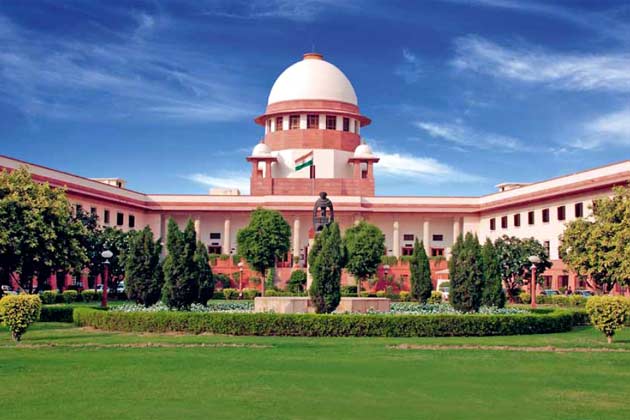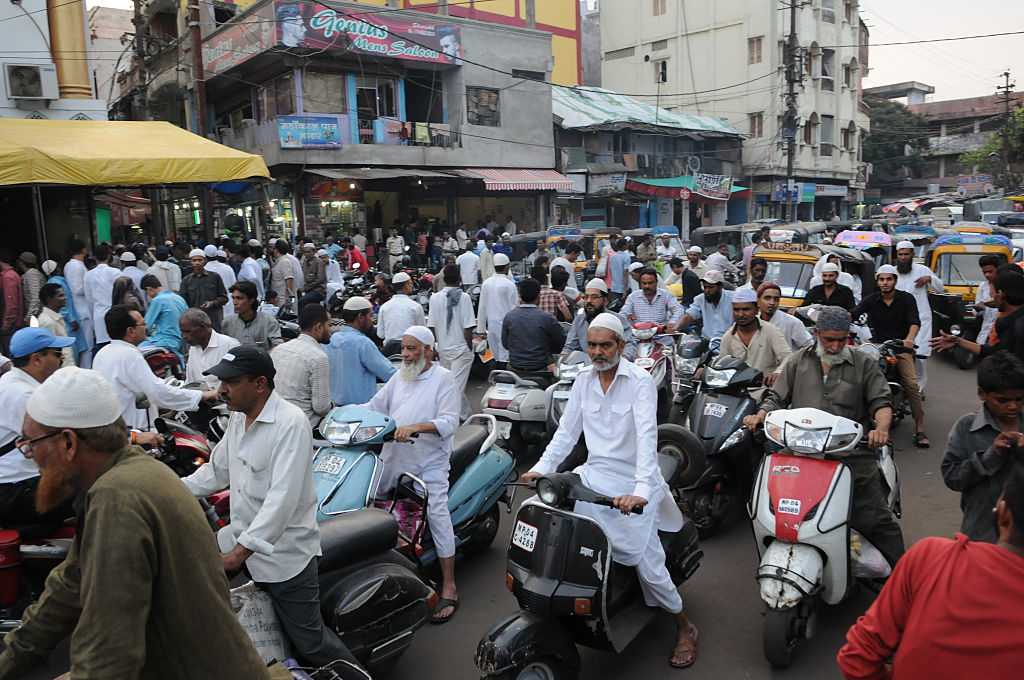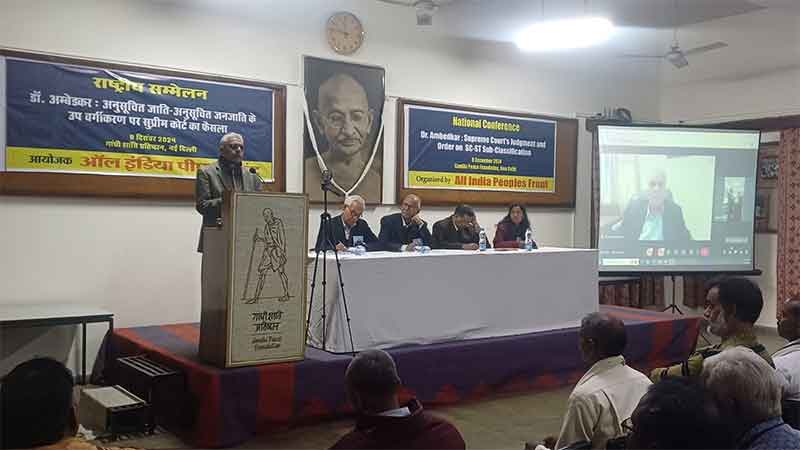
The nexus between judiciary and Parliament is manifested whenever there is a compromise on the social outcome that benefits both the parties equally. Otherwise, there will be tension both in the Parliament and on the benches. There are several occasions where the Parliament has agreed and kept silent when the Judiciary dragged its feet in to legislative functions like making Law for the appointment of Judges for the apex Court. The conflict between the two bodies has submerged once they realized that their social, economic and political interests lie in their class composition. It is increasingly proved that the class composition of the judiciary and the Cabinet encompass the same social groups and cohorts particularly in the recent times. There used to be some conflict of opinion when judiciary outreach helped to uphold the Constitutional mandate of providing succor to the poor while the legislative wing comprising the upper echelons of policy formulation thought differently. Interestingly, the executive consisting of the higher administrative grade civil servants joining the elite group appear to be from the same social cohorts with some commitment for the development of the nation. But, the 1991 economic liberalization has cleared the air of no conflict zone as the policies formulated to usher in free market capitalism and have done away with the alleged obnoxious license permit raj. Of course, it has introduced the Contractor and Scam infested policy regime that permitted unlimited opportunities of accumulation that resulted in the widening inequalities in the country. Thomas Piketty and his Inequality lab have been publishing reports on India to provide quantitative data to substantiate some of the above propositions. This brief introduction is necessitated to examine the current judgment of division of reservations among different sub castes of scheduled castes and tribes delivered recently. The academic scrutiny of the role and responsibility of Indian judiciary in preserving the ideals of our society through the preamble of our Constitution during the last 74 years is a rewarding exercise. It is in this context, a small issue is being taken up for analysis to add to the limited literature on the subject.
The provision of the caste-based reservations in the Constitution has been insinuating so much of controversy from the very beginning due to judicial intervention. In fact the, first amendment to the Constitution was affected by the apex Court judgment in the Champak Dorairajan case. We do not know what was the reaction of Champak Dorairajan to the subsequent amendments? In fact, Dr. B.R Ambedkar was in the Parliament when the first amendment was made. His remarks in the Parliament echo the sentiments of not only scheduled castes but also of all the reserved categories. He has expressed his displeasure for citing Art29 (2) in striking down the reservations by the apex Court. He has harshly reacted to the judgment by saying that it is inevitable in a country like India to exclude some castes to provide reservations to backward castes. When the speaker warned him not to cross the limits, Ambedkar said, “I am bound to obey the judgment, but I am not bound to respect it. That is the liberty which every Lawyer enjoys in telling the Judge that his judgment is wrong. I am not prepared to give up that liberty.” Thus, the question of opposing reservations to socially and educationally backward castes, scheduled castes and tribes even after 75 years is a saga of struggle of the victims of the caste system and its defenders.
People and even informed scholars cite the American Affirmative action to advance arguments against the reservations in India forgetting that it is an affirmative action for admissions in university education while the reservation policy has more than 150 years of history in India. Recently, the Supreme Court of America and its conservative Judges justice John Roberts and Justice Clarance Thomas appointed by Trump declared affirmative Action as unconstitutional. Perhaps, our judiciary being inspired by the logic and class interests of USA have clubbed all the litigations on reservations in the Court and delivered the present judgment. It has used a different strategy in making the Chief Justice in waiting a Dalit, to write the controversial part of the judgment with no conscience. It is equally pathetic to note that a civilized society like that of USA did not express shame in allowing inhuman discrimination between two human groups based on colour of the person in the twenty first century. However, the democratic President Biden has expressed his dismay at the judgment. We do not expect such expressions from our political class as the judgment is loaded with political messages.
What is the judgment?
The following is the conclusion part of the judgment that is self explanatory.
a. Article 14 of the Constitution permits sub-classification of a class which is not similarly situated for the purpose of the law. The Court while testing the validity of sub-classification must determine if the class is a homogenous integrated class for fulfilling the objective of the sub-classification. If the class is not integrated for the purpose, the class can be further classified upon the fulfillment of the two-prong intelligible differentia standard;
b. In Indra Sawhney (supra), this Court did not limit the application of sub classification only to the Other Backward Class. This Court upheld the application of the principle to beneficiary classes under Articles 15(4) and 16(4);
c. Article 341(1) does not create a deeming fiction. The phrase “deemed” is used
in the provision to mean that the castes or groups notified by the President shall be “regarded as” the Scheduled Castes. Even if it is accepted that the deeming fiction is used for the creation of a constitutional identity, the only logical consequence that flows from it is that castes included in the list will receive the benefits that the Constitution provides to the Scheduled Castes. The operation of the provision does not create an integrated homogenous class;
d. Sub-classification within the Scheduled Castes does not violate Article 341(2) because the castes are not per se included in or excluded from the List. Classification would violate the provision only when either preference or exclusive benefit is provided to certain castes or groups of the Scheduled Castes over all the seats reserved for the class;
e. Historical and empirical evidence demonstrates that the Scheduled Castes are a socially heterogeneous class. Thus, the State in exercise of the power under Articles 15(4) and 16(4) can further classify the Scheduled Castes if (a) there is a rational principle for differentiation; and (b) the rational principle has a nexus with the purpose of sub-classification; and
f. The holding in Chinnaiah (supra) that sub-classification of the Scheduled Castes is impermissible is overruled. The scope of sub-classification of the Scheduled Castes is summarized below:
i. The objective of any form of affirmative action including sub classification is to provide substantive equality of opportunity for the backward classes. The State can sub-classify, inter alia, based on inadequate representation of certain castes. However, the State must establish that the inadequacy of representation of a caste/group is because of its backwardness;
ii. The State must collect data on the inadequacy of representation in the “services of the State” because it is used as an indicator of backwardness; and
iii. Article 335 of the Constitution is not a limitation on the exercise of power under Articles 16(1) and 16(4). Rather, it is a restatement of the necessity of considering the claims of the Scheduled Castes and the Scheduled Tribes in public services. Efficiency of administration must be viewed in a manner which promotes inclusion and equality as required by Article 16(1).
The conclusions and the text of the judgment conveys that there is a need to introduce creamy layer for reservations within each category and to facilitate it sub categorization is permitted in each state. But, how is it possible to categorize them without scientific data on the socioeconomic conditions of around 3500 castes. Perhaps, it may take some time for the government to study the text and come out with a policy statement. But, the Parliament has a wide range of group interests and visions to discuss about the fall out of the judgment rather than allowing it happen. In fact , the Parliament is supreme as people have reposed confidence in them and expressed their common will to take decisions about the citizens and not the narrowly specialized group of people who knew only Law and their job is to interpret Constitutional provisions only. Of course, if the Parliament wishes to consult them for expert advice, yes they can do. But, it is the elected representatives who are empowered to discuss and make policies, particularly social policies in a diverse society. Unfortunately the Indian judiciary is not diverse enough in its composition and competent to provide guidelines for action on issues of social policy.
Social jurisprudence in India has not reached the desired level of competence in terms of the results of the judgments delivered and the consequent burgeoning of cases and the comments made by legal scholars like Prof Marc Galanter. It has accumulated discredit for failure to make the judiciary fully representative of basic principle of democracy under whose umbrella it functions. It is time and again noticed that upper caste judges from the time of Champak Dorairajan , Indra Sahwney cases sit on judgment and bring in issues and precedents that are not directly related to the case like citing Art 335 for merit while the said article is related to scheduled castes. As a result, the questions that they formulate to examine, scrutinize and deliver judgments remain unfinished leading to administrative problems, accumulation of inefficiency and social costs to the public. The judges however pass off with external post retirement benefits as the principle of ‘loyalty is a function of future expectations’ applies here. Therefore, the present judgment on sub classification is not anything new and was anticipated given the political agenda of the ruling party.
The sub castes like Madigas in Andhra Pradesh and others in Punjab, Haryana etc appealed to the apex court for justice as they were not adequately represented in proportion to their population. They must have given data that may not be relevant after 25 years. But, the basic plea is that they are discriminated and not given equality of opportunity is genuine and should be addressed for harmonious living of the social groups that have different castes clubbed together as SC,OBC, ST etc. In fact the whole system of caste is inhuman, discriminatory and dwija hegemonic in content seem to have not been addressed adequately. Therefore any remedy of giving opportunities by dividing and subdividing the groups result in more litigation and pave a better environment for non reserved groups to get united and divide the people for political gains. The political power enjoyed by the privileged classes for the last few centuries is living evidence of this phenomenon. This is relevant here since the present judgment of sub dividing groups may not restore equality of opportunity when majority of the opportunities in economic and social life are assigned to the privileged classes. In other words, any judgment on social equality must consider the whole universe of inequality as perpetuated in the Indian ethos and not for 15 per cent population or even 50 percent. It should cover the total population and the gamut of structures of inequality to provide a comprehensive judgment. In this context, the present judgment is only a passing perspective and not a permanent solution to the problem at hand. In fact Prof. K.S.Chalam in his book ‘Caste-based Reservations and Human Development in India’, 2007 cited by judiciary and scholars put forward an argument that we need a weighted Index of Backwardness to list out castes and individual families within castes including the general category to replace caste-based reservations with democratic representations not only in jobs, judiciary, economic opportunities but also in other socially relevant subjects. He has gone to the extent of saying that it is possible to withdraw reservations to a caste if 70 per cent of the families in a caste occupying reasonable positions crossing income-occupation-educational backwardness weighted index. The proposal can be discussed with the availability of increasing quality of standards of data with ICT applications.
Subscribe to Our Newsletter
Get the latest CounterCurrents updates delivered straight to your inbox.
It is interesting that the so called reservation groups SC, S T and OBC get threatened and emotionally united whenever such judgments come from the judiciary and the immediate implementation of the same by DOP&T. Thereafter each group gets back to their original social cell and slumber till another impediment is approaching. There is no coherent policy watch or social awareness exercises to get the unity and solidarity among these groups to reduce the intensity of division. Now, the judgment is clear in saying that each state can draw their own sub categories based on data, there appears to be no threat for the reservations at the national level immediately. This is an intelligent move so that the government can avoid a Mandal type agitation not only against creamy layer but also demanding caste census to make it operational. All this depends upon the unity and solidarity among the socially and educationally marginalized castes. But the hidden agenda appears to be first introducing the Reddy concept of creamy layer and later dump the whole system of reservations lock stock and barrel. Now it is left to the intellectuals to educate their cohorts and put pressure on the political representatives irrespective of the party to see the danger of losing the identity and Constitutional guarantees.
Prof.K.S.Chalam is the author of Political Economy of Caste in India, Sage
















































